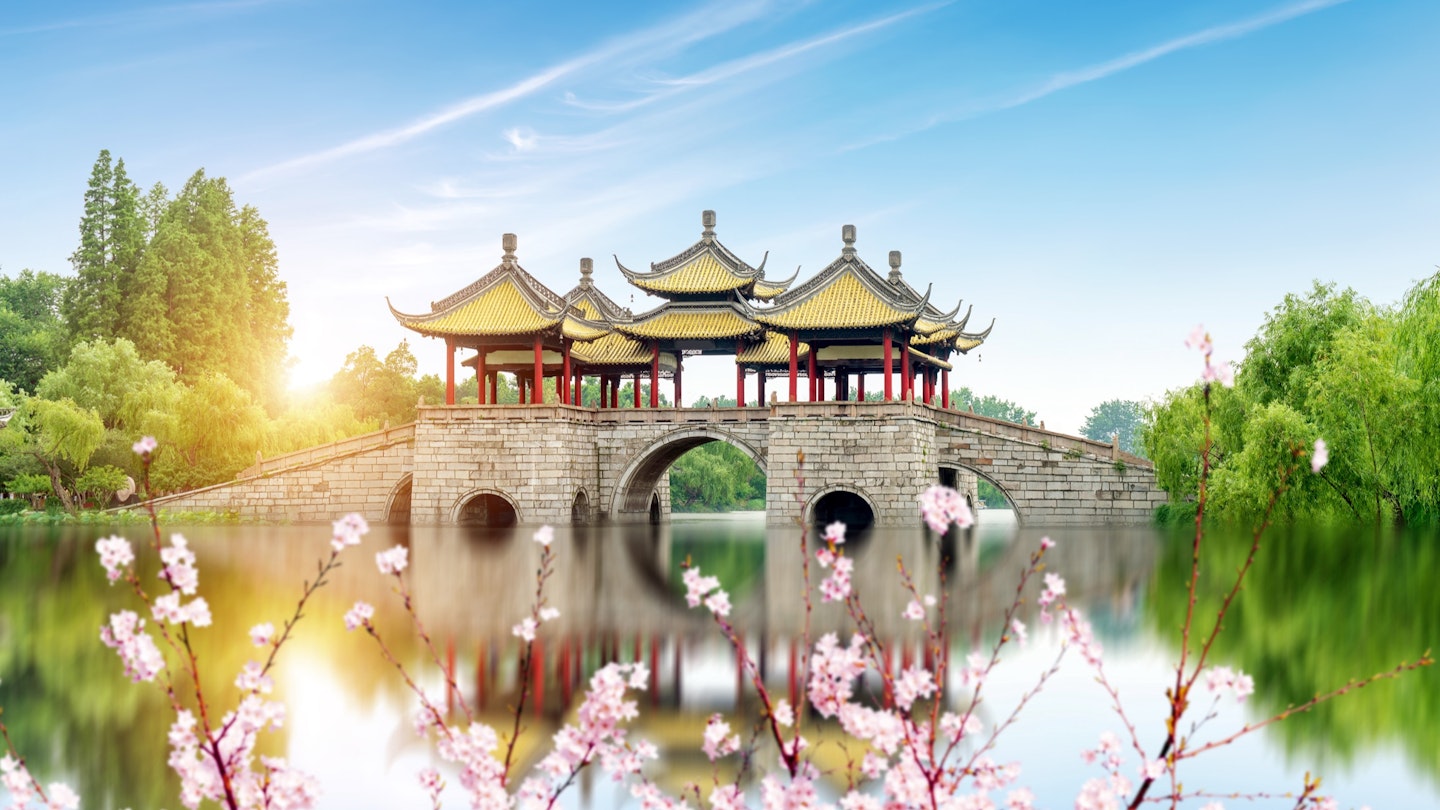Nurtured by the life-giving waters of the Yangtze, Jiangsu has thrived for millennia as a cradle of culture, commerce, and creativity. The people of Jiangsu, instilled with an appreciation of the finer things, proudly lay claim to one of China’s greatest classical gardens, its most graceful opera, and in Nanjing, a walled city that was the ancient capital of China for nearly 500 years.
Truly a province of superlatives, one week is by no means enough time to experience all that Jiangsu has to offer, but, like the region’s exquisite Huaiyang cuisine, a taste will surely leave you wanting more.
Days 1-3: Nanjing
Nanjing, meaning ‘southern capital,’ is a leafy, forward-looking metropolis with a rich historical backdrop. As a major settlement since the Six Dynasties period (220-589 AD), Nanjing enjoyed an illustrious past crowned with its status as the capital of the Ming dynasty starting in 1368. A robust wall encircled Nanjing, and today, sections remain well-preserved, welcoming visitors.
This glorious past can be explored at Purple Mountain, a beautiful forested area just east of the city center, rising approximately 1,500 feet. Here lies the magnificent mausoleum of the Hongwu emperor, the Ming Xiaoling Tomb, accessed via the ‘Sacred Way’—a 1.2-mile funerary road lined with stone guardians, including camels, elephants, lions, officials, and mythical beasts.
Reaching the top of a 1,575-foot stairway leads to the Sun Yatsen Mausoleum, where the leader of China’s Democratic Revolution rests. During its brief period as the new capital, Sun took his oath of office at the Presidential Palace, now transformed into a museum preserving the era’s history in China.

At the unmissable Nanjing Museum, the city’s 1930s era comes alive through interactive galleries featuring actors in period attire. As one of China’s large-scale comprehensive museums, it boasts an extensive collection, including jade clothing from the royal family of the Han Dynasty, intricately crafted with over 2,600 pieces of jade.
Moreover, Nanjing features a youthful, artsy vibe thanks to its prestigious universities, with broad streets shaded by Parisian-style trees and dotted with cafes and bookshops. After enjoying a cup of third-wave coffee and delicious pastries at Skyways Bakery, a leisurely stroll through the beautiful campus of Nanjing University offers splendid architecture and green spaces for relaxing afternoons.
Day 4: Gaochun
South of the bustling capital lies Gaochun, a lovely county known for its traditional agriculture and scenic countryside. Here, you can explore accessible hiking paths lined with wildflowers and green tea plantations. It’s the perfect setting for cycling through rural China, picking fruits and tea, or joining locals on leisurely fishing trips. Celebrated for its slow travel experience, Gaochun also offers authentic organic farm-to-table cuisine, emphasizing freshness and local flavors.

Day 5: Yangzhou
Just a 50-minute train ride brings you to Yangzhou, a city rich in traditional culture, stemming from its historic salt and silk trade along the Grand Canal. Wealthy merchants constructed ornate gardens, such as Ge Garden, which celebrates the bamboo plant with various species lining its winding paths. The character ‘ge’ (个) humorously reflects the triple leaf arrangement of bamboo, capturing the playful spirit of the garden’s creator, a 19th-century salt merchant.
Nearby is He Garden, formerly owned by He Zhige, a late Qing Dynasty official. Here, classic Chinese techniques blended with Western architectural concepts create one of the era’s most stunning private gardens.
The iconic Slender West Lake, Yangzhou’s most famous sight, is a large-scale lake garden established by affluent salt merchants in the 18th century. Adorned with willows, bridges, and pavilions, this picturesque area is reminiscent of China’s most celebrated beauty spot, West Lake in Hangzhou.
However, the real star of Yangzhou is its renowned Huaiyang cuisine, known for being delicate, refined, and beautifully presented. Fuchun Teahouse offers fragrant green tea paired with delicious pastries and crab-roe soup dumplings, alongside delectable Yangzhou fried rice—the dish that this city introduced to the world.
Days 6-7: Suzhou
Suzhou, the embodiment of beauty in China, boasts a history over 2,500 years and reached its peak during the Ming dynasty. Scholars and merchants, in their quest for artistic perfection, constructed elaborate gardens, over 50 of which remain today. Nine have been awarded World Heritage status by UNESCO, with the most renowned being the Humble Administrator’s Garden.
Built in 1506, this garden is a masterpiece of water features, rock gardens, and structures. Every element is purposefully placed; circular ‘moon gates’ and flower-shaped windows frame garden views as living paintings. An ingenious technique called jiejing allows certain viewpoints, such as the distant 250-foot-high Beisi Pagoda, to appear integrated within the garden.

Among Suzhou’s treasures are the picturesque Lion Grove Garden, notable for its gnarled rocks resembling Chinese guardian lions, and the compact yet artistically exceptional Master of the Nets Garden, which showcases miniature renditions of China’s natural landscapes.
Day 8: Water Towns
Jiangsu’s celebrated shui zhen (water towns), with scenic canals crossed by quaint stone bridges, are easily accessible from Suzhou. The charming town of Tongli is an excellent choice, still vibrant with local life and conveniently linked to Suzhou’s subway.
For stunning photographic opportunities, hop into one of the many boats that navigate the waterways. Alternatively, settle into a canal-side restaurant to sip tea, enjoy sweet qingtuan dumplings, and watch the world drift by.




